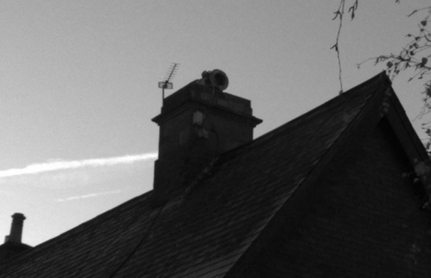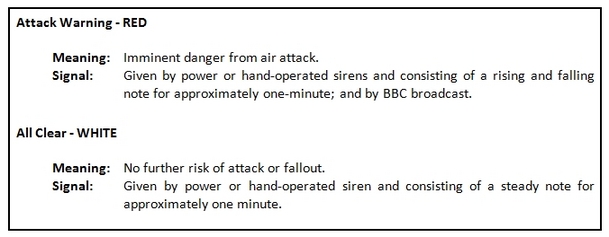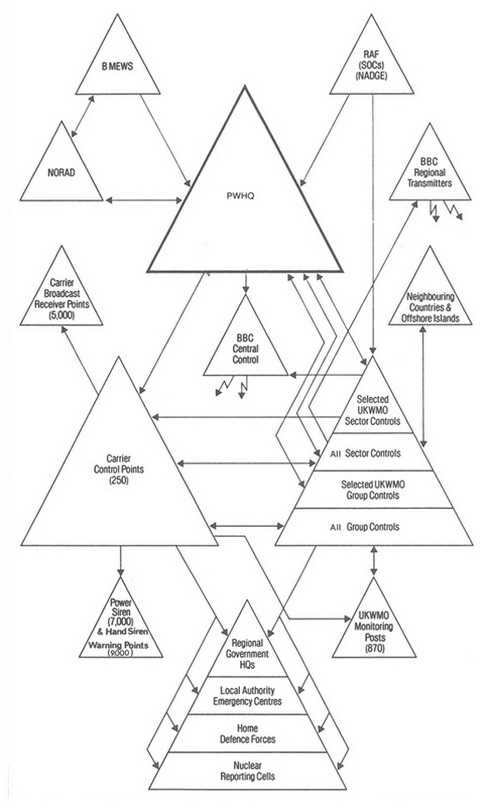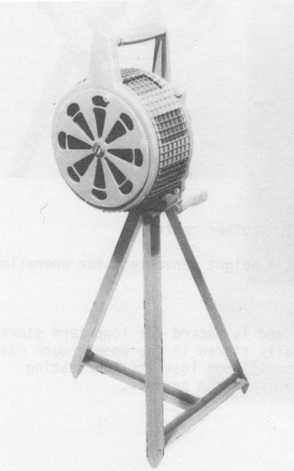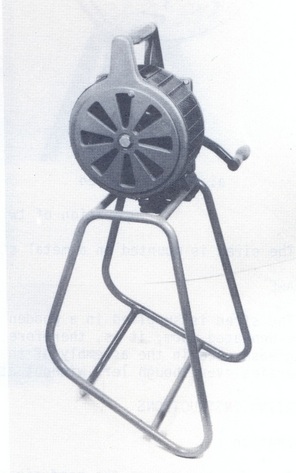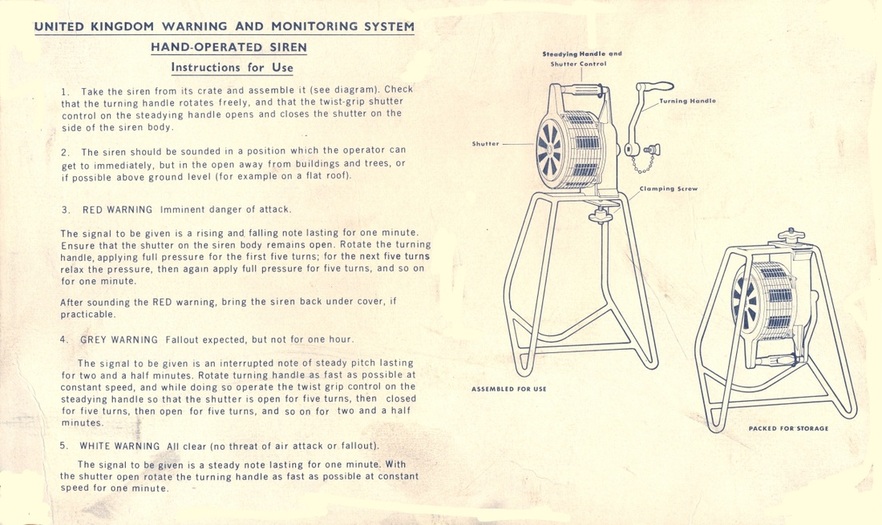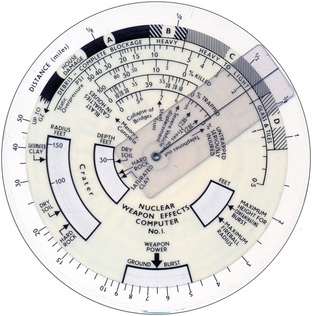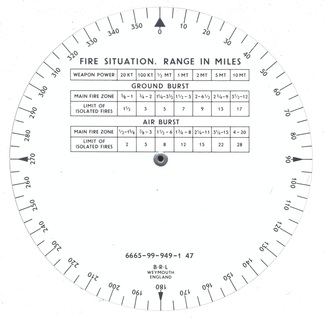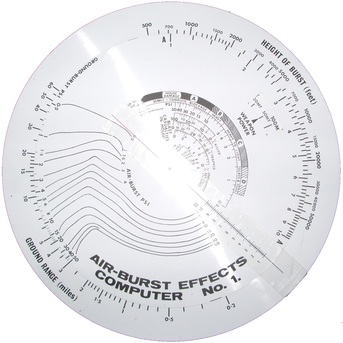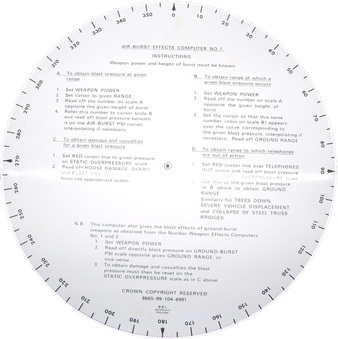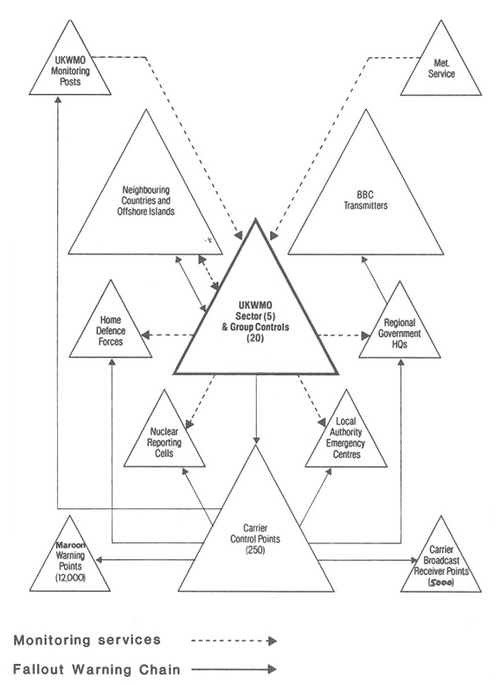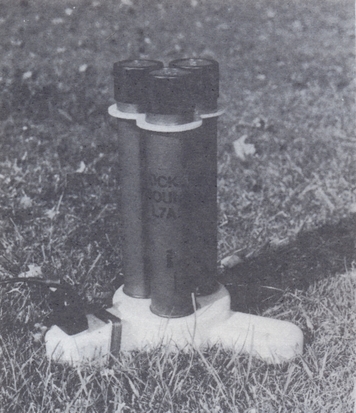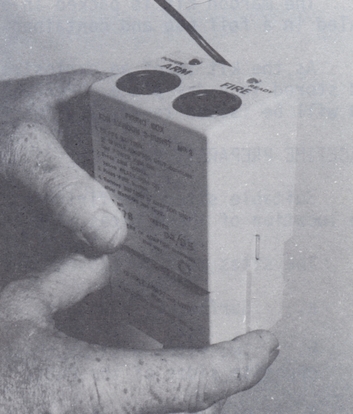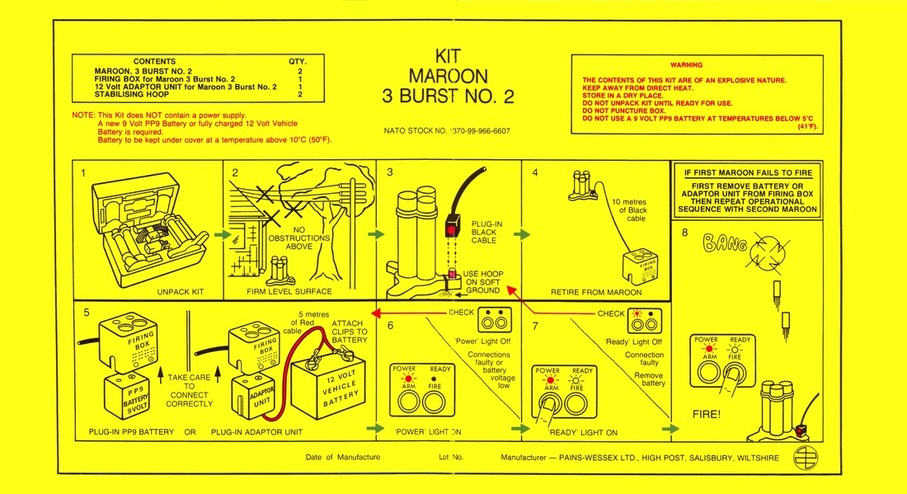WARNING EQUIPMENT - BEFORE ATTACK
AIR ATTACK WARNING SYSTEM
The origination of warnings to the public of the threat of air attack was based on intelligence received by the Principal Warning Officer based at the Primary War Headquarters (PWHQ) formerly the UK Regional Air Operations Centre (UKRAOC). Such intelligence would have been gathered from a number of sources including;
- Ballistic Missile Early Warning System (BMEWS) sites in Greenland, Alaska and on the North Yorkshire moors at Fylingdales.
- Northern Radar System (NORAD) based in Colorado, US.
- RAF Sector Operations Centres which form part of the NATO Air defence Ground Environment System (NADGE).
Air attack warnings were passed from PWHQ (or selected sector controls) simultaneously to the BBC Central Control for radio broadcast; and by land-line broadcast system to some 250 Carrier Control Points (CCPs) installed in major police stations throughout the UK. The Carrier Control Points would immediately issue a warning message to all Carrier Receivers which would notify the following groups of imminent attack;
- Royal Observer Corps Monitoring Posts.
- Regional Government HQs
- Local Authority Emergency Centres,
- Home Defence Forces
- Nuclear Reporting Cells
The files below are scans of the set of instruction cards that were issued to users of the Carrier system and aim to provide guidance in the testing and use of the Carrier Control Point communications system during peacetime and wartime.
|
|
| ||||||||||||||||||
A network of 19,000 Warning Points located throughout the UK would also be notified of the imminent attack. These 19,000 Warning Points were located predominantly at police, fire and coastguard stations, civil and military establishments, hospitals, rural areas and various industrial centres.
Of these sites, 9,000 were equipped with hand operated sirens and maroons, 2000 with sirens only and 3,000 with fallout warning maroons only. The remaining 5,000 were receiver points. Simultaneously by remote control, all power operated sirens would be activated to provide the Warning Attack. The following types of warning would be given to the public:
These warnings were a direct follow-on from air attack during WW2. With the added threat from nuclear fallout from 1957 a further warning was developed:-
Image Source: [1] Si.Craine; [2] ROC Training Manual
HAND-HELD WARNING SYREN
The hand operated syren is a portable instrument designed for providing audible warnings to the public in the event of an attack or to sound the imminent 'all-clear'.Two versions of the syren were used by the Corps, the 'Carter' and the Service Electric 'Secomak' type. Both have the same facilities and look similar in aperance but vary in consruction.
The syren consists of a cast metal sound box mounted onto a metal stand. The Secomak version is designed to allow the sound box (head) to be removed when not in use and stored between the legs of the metal stand . The sound box contains the rotor which is turned through gears by winding a handle. A steadying handle is fitted to the top of the sound box incorporating a twist-grip shutter control. Turning this grip, opens or closes the damping shutter fitted to the sound box.
Image Sources: ROC Training Manual & Standard Operating Procedures
WARNING EQUIPMENT - DURING ATTACK
AWDREY (ATOMIC WEAPONS DETECTION RECOGNITION & ESTIMATION OF YIELD)
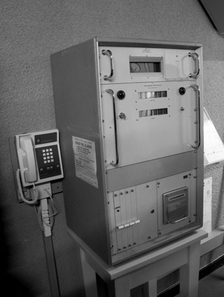
AWDREY unit at York ROC Group Control
AWDREY was designed, built and maintained by the Atomic Weapons Establishment at Aldermaston. The system was designed to detect the blast of a nuclear explosion through the registering of the initial and subsequent intense flash generated by the explosion either by the electro-magnetic pulse that the explosion generates or from the flash generated by the blast. From these effects, an estimate the nuclear devices power (yield) could be determined.
The units were not located at all Group Controls, but were located far enough apart that a simultaneous response on two AWDREY units could only be registered as a nuclear explosion and not be triggered from a lightning strike which would generally affect only one AWDREY. A further machine called DIADEM (Direction Indicator of Atomic Detonation by Electronic Means) worked with AWDREY and enabled the identification of the likely bearing of the explosion.
ROC post bomb detection instruments such as the Bomb Power Indicator (BPI) operated by recording the pressure of the blast wave from any nearby nuclear explosion. Any ultra-high-altitude nuclear explosion, designed to knock out the UK's communications and electronic equipment would not produce a detectable blast wave and the AWDREY system was therefore the only method of identifying these bursts.
The units were not located at all Group Controls, but were located far enough apart that a simultaneous response on two AWDREY units could only be registered as a nuclear explosion and not be triggered from a lightning strike which would generally affect only one AWDREY. A further machine called DIADEM (Direction Indicator of Atomic Detonation by Electronic Means) worked with AWDREY and enabled the identification of the likely bearing of the explosion.
ROC post bomb detection instruments such as the Bomb Power Indicator (BPI) operated by recording the pressure of the blast wave from any nearby nuclear explosion. Any ultra-high-altitude nuclear explosion, designed to knock out the UK's communications and electronic equipment would not produce a detectable blast wave and the AWDREY system was therefore the only method of identifying these bursts.
NUCLEAR WEAPONS EFFECTS ASSESSMENT
NUCLEAR WEAPONS EFFECTS COMPUTER (No.1)
The Nuclear Weapons Effects Computer No. 1 was manufactured by Blundell Rules Limited (BRL) of Weymouth England circa 1960. Its purpose is to predict a variety of consequences of a nuclear explosion. The magnitude of the burst is specified (in kilotons or megatons) and the calculator estimates, for various distances from ground zero, the damage to buildings, the crater dimensions, the percent of the population killed, trapped, and seriously injured. The back of the slide rule has a table that estimates the extent of the main fire zones.
The Nuclear Weapons Effects Computer No. 1 was manufactured by Blundell Rules Limited (BRL) of Weymouth England circa 1960. Its purpose is to predict a variety of consequences of a nuclear explosion. The magnitude of the burst is specified (in kilotons or megatons) and the calculator estimates, for various distances from ground zero, the damage to buildings, the crater dimensions, the percent of the population killed, trapped, and seriously injured. The back of the slide rule has a table that estimates the extent of the main fire zones.
AIR-BURST EFFECTS COMPUTER No.1
The Air-Burst Effects Computer No.1 was similar to the Nuclear Weapons Effects Calculator and also designed by Blundell Rules Ltd. (BRL) of Weymouth. Although both computers are similar in their operations; unlike the Nuclear Weapons Effects Computer, the Air-Burst Effects Computer focused solely on the effects of a nuclear explosion occuring abover the ground (Air-Burst).
WARNING EQUIPMENT - AFTER ATTACK
FALLOUT WARNING
Thanks to the array of instruments and apparatus embodied in the 25 (post-1968) reinforced Group Controls and the underground Monitoring Posts, the Corps would have been able to supply essential data on the arrival and intensity of the fallout. This would enable officers of the United Kingdom Warning and Monitoring Organisation at group controls, to advise people in the path of radioactive dust to take cover or to advise the armed forces or other controlling authorities which areas are safe for access and operations by land, air or sea. Fallout warnings (Black) would be passed over the carrier system to the numerous Carrier Control Points and thence onto the warning points within the carrier area.
The ROC was therefore ideally suited for its role of reporting fallout. The strategically placed network extended from the Orkneys to the far south-west. Although the role of the Corps had changed completely during the 1960s and 70s, the traditional links with the Royal Air Force remained and the skill of visual aircraft recognition was still maintained by post observers up until stand-down in 1991.
The ROC was therefore ideally suited for its role of reporting fallout. The strategically placed network extended from the Orkneys to the far south-west. Although the role of the Corps had changed completely during the 1960s and 70s, the traditional links with the Royal Air Force remained and the skill of visual aircraft recognition was still maintained by post observers up until stand-down in 1991.
Image Sources: ROC Training Manual & Standard Operating Procedures
FALLOUT WARNING MAROONS
The Fallout Warning Maroons are pyrotechnics manufactured latterly by Pains-Wessex Ltd and used for the provision of providing an audible fallout warning to the public.
The maroon is designed to propel three explosive bursts separately to a height of approximately 40 metres above the ground, where they detonate at intervals to produce the three bangs of the accepted Fallout Warning (Black) Signal.
The maroon is designed to propel three explosive bursts separately to a height of approximately 40 metres above the ground, where they detonate at intervals to produce the three bangs of the accepted Fallout Warning (Black) Signal.
Image Sources: ROC Training Manual & Standard Operating Procedures
